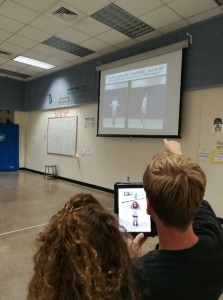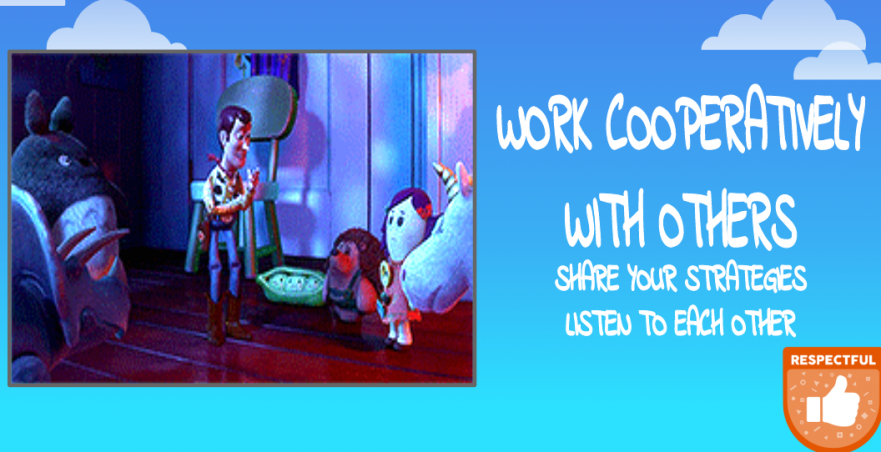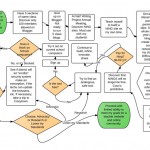Keeping kindergartners engaged is a tough task for any teacher. A friend of mine, a great kindergarten teacher, just told me a story about a class of his. As he was giving extended instructions, one of his students blurted out, “Boooorrrriiiinnggg!” After reflecting and considering her perspective, he realized some things. His directions were too long. After all, kindergartners have short attention spans. She wasn’t trying to be disrespectful, she just wasn’t receiving any meaningful, relevant information. He realized the blurting out was less of a reflection on him and more about what the student needed. She didn’t need a lecture, she needed to play. Author and child development specialist Gill Connell says we should teach the body before teaching the mind. He discovered that his students learn best when he gets them hooked through short, relevant stories. Then, have the students watch the skill, then perform it. I agree with this philosophy wholeheartedly.
Have you ever had students ask the same questions all year? “How do I…?” That happened to me as well, until I discovered GIFs (Graphics Interchange Formats). GIFs are repeated 3-second video clips that I have projected for all students to see. They give students a model on how to execute skills correctly. With kindergartners, I make a GIF of nearly everything I teach (how to tie shoes, properly walking to the line, helping someone off the ground, turning to face the speaker, dance moves, exercises, and locomotor movements, just to name a few). Essentially, GIFs allow me to have multiple teachers at once. Students simply see the skill and do it, eliminating distractions. Because of this, I can strengthen relationships by checking in with them and providing specific, individualized feedback. I even create GIFs with some of my well-behaved students actually in them. This is extremely motivating as all of them want to be included in a GIF. Imagine arriving to class and seeing yourself on the projector throwing a ball. Don’t you think that will be a memorable moment for you? Don’t you think that will help connect physical education with happiness? The entire class thinks you are famous! Regardless of your physical ability level, I bet that would get you excited about returning to PE next time.



Using an iPad app called “Bam Video Delay” is another helpful visual I use daily. This app is on an 8-second delay, which allows students to do the skill and then analyze their performance. It provides immediate, tangible evidence for the student and teacher to connect to the appropriate score on the rubric. Imagine doing the “Macarena” dance as a kindergartner. Rather than the teacher simply providing feedback from his or her perspective, you (the student) could see yourself dancing next to a modeled video doing it correctly. This valuable feedback can help both students and teachers correct any missteps. All students, especially kindergartners, love seeing themselves on the iPad!
Getting students hooked through provocation, visuals, and short, relevant storytelling can also be effective. Know what your students are interested in, and incorporate that within your class. For example, I know many of my students love the movie, “Toy Story.” So, when going over our expectations on the first day of class, I showed them a GIF of Woody showing gratitude and saying “Thanks” to a friend. This immediately “clicked” with the students as they started nodding their heads, now understanding what being grateful looks like, sounds like, and feels like. Another example of getting them hooked and incorporating their interests was during the Halloween season. I had my students “carving pumpkins” for every house in the neighborhood. We had a quick discussion on how good it feels to be festive, carve a pumpkin, and part of a tradition. I explained that we needed to carve pumpkins for everyone in the neighborhood so all could feel included! So, I made a GIF of a student jumping with their “slicer” (pool noodle) down to a pumpkin and slicing it with their feet as their partner cheered them on. The lesson focus on properly jumping horizontally was disguised. If I told them we were just jumping, they wouldn’t be as vested. However, because students were so focused on carving pumpkins and helping others, they were actively engaged.
With kindergartners, it’s sometimes best to get out of the way of their learning. Let’s not “over teach” by being the “sage on the stage.” Get students hooked quickly through provocation, then get them moving using visuals to enhance learning. Provide students a sense of autonomy and a voice/choice as we allow them to explore using their imagination. This will help create a progressive classroom climate where students feel empowered as leaders, as we simply facilitate.










Comments 6
What a cool use of technology! I’m a tech coach so this is going on my list. I don’t know what I could possibly do with Bam Video Delay, but it sounds interesting and I’m determined to try it.
Author
Thanks, Rachel! Bam can be used for anything. Have them type or write, then watch their form. How are they doing compared to how they THINK they are doing? When giving talking with their partner, have them watch themselves after. Are they making eye contact? Do they have good body language when interacting? They will soon find out!
Love this—all of it! Great ideas woven together in an awesome blog! I enjoyed it so much!
Author
Thanks, Jess! Glad you found it useful.
I am excited to look up this app and bring it to my lit and tech coaches on campus. I am sure many of us will enjoy playing around and creating effective lesson plans and units with it!
Thanks for sharing!
Author
Awesome! Thanks for passing the tech resources along!